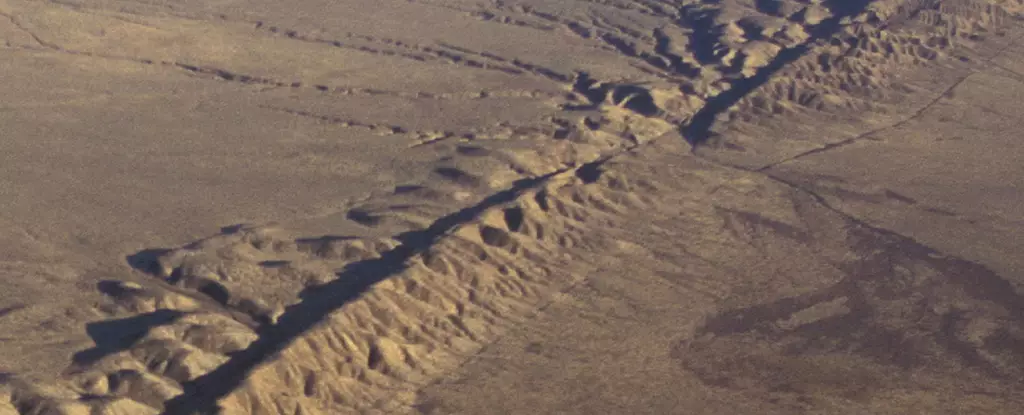For centuries, humanity has viewed earthquakes as sudden, catastrophic events—devastating shocks that strike without warning. Yet, recent scientific breakthroughs reveal a more insidious truth: many of these “gentle” tremors, or slow slip earthquakes, quietly release tectonic stress over days or even weeks. While these slow quakes rarely cause immediate destruction, dismissing their significance is a dangerous oversight. These subtle movements function as the Earth’s way of gradually easing tension, yet they hold the potential to be the foreshadowing of much larger, more destructive events. Our tendency to categorize them as harmless lull us into complacency, ignoring the fact that they contain critical clues about future catastrophes. The misconception that these slow motions are benign underestimates the complex signals the Earth is sending us—signals that, if properly interpreted, could revolutionize our preparedness.
The Promise and Pitfalls of Monitoring the Earth’s Quiet Rhythms
Advancements in sensor technology and deep-water monitoring systems have unlocked the possibility of observing these elusive slow slip earthquakes as they occur in real time. Researchers from the University of Texas have successfully documented multiple SSEs, notably in the perilous Nankai Trough off Japan’s coast. These are not just scientific curiosities—they are vital indicators of how stress builds and releases along major fault lines. By identifying the tremors as “tectonic shock absorbers,” scientists recognize a crucial protective mechanism within Earth’s tectonic dance. However, this discovery also exposes a bitter irony: the very same fault characteristics that allow some regions to mitigate damage increase vulnerability elsewhere. Cascadia, a fault zone stretching off the west coast of North America, bears the scars of similar tectonic forces but lacks the detailed monitoring systems now available at Nankai. The danger lies in overconfidence—believing that because some faults seem “calm,” they are not preparing to unleash a devastating quake. Without comprehensive monitoring, these silent zones could hide the deadliest surprises.
Challenging Our Assumptions About Earthquake Prediction
Our current models for predicting earthquakes are alarmingly optimistic, despite decades of scientific effort. The hope that precise forecasts are imminent often clashes with the Earth’s inherent unpredictability. Slow slip earthquakes underscore this tension—they provide tantalizing data; yet, translating this into concrete predictions remains an arduous challenge. The realization that high-pressure subsurface fluids may influence these slow motions adds yet another layer of complexity. It suggests that faults are not static or predictable but dynamic systems influenced by myriad factors, some of which are still poorly understood. The balance between letting these data guide us and falsely believing they offer certainty is delicate. Overconfidence might lead to complacency, while excessive skepticism could result in necessary warnings being ignored. The truth is, our grasp of earthquake precursors is evolving, but still imperfect. Recognizing the significance of slow earthquakes should motivate a broader, more comprehensive approach—one that integrates subtle seismic signals rather than ignoring them as anomalies.
The Urgent Need for a New Approach to Risk Assessment
The devastating history of the Nankai Trough, with its 1946 quake and horrendous aftermath, starkly demonstrates how unprepared we often are for major seismic events. Relying solely on historical records and surface observations ignores the undercurrents of tectonic activity beneath our feet. As science advances, it’s clear that a paradigm shift is needed—moving from reactive crisis management to proactive risk assessment based on real-time data. This means investing heavily in high-precision sensors and continuous monitoring networks in fault zones worldwide, especially in regions like Cascadia, where the threat is as imminent as it is poorly understood. Only by embracing the subtle, long-term signals of slow slip earthquakes can we hope to develop probabilistic models that better inform public policy, infrastructure resilience, and emergency preparedness. The future of earthquake safety hinges not on waiting for the big, destructive quake to strike but on interpreting Earth’s whisperings before they turn into shouts of catastrophe. It’s a sobering truth that our overconfidence and dismissiveness of all seismic signals—no matter how gentle—could cost thousands of lives if we continue to ignore what the Earth is quietly revealing.


Leave a Reply